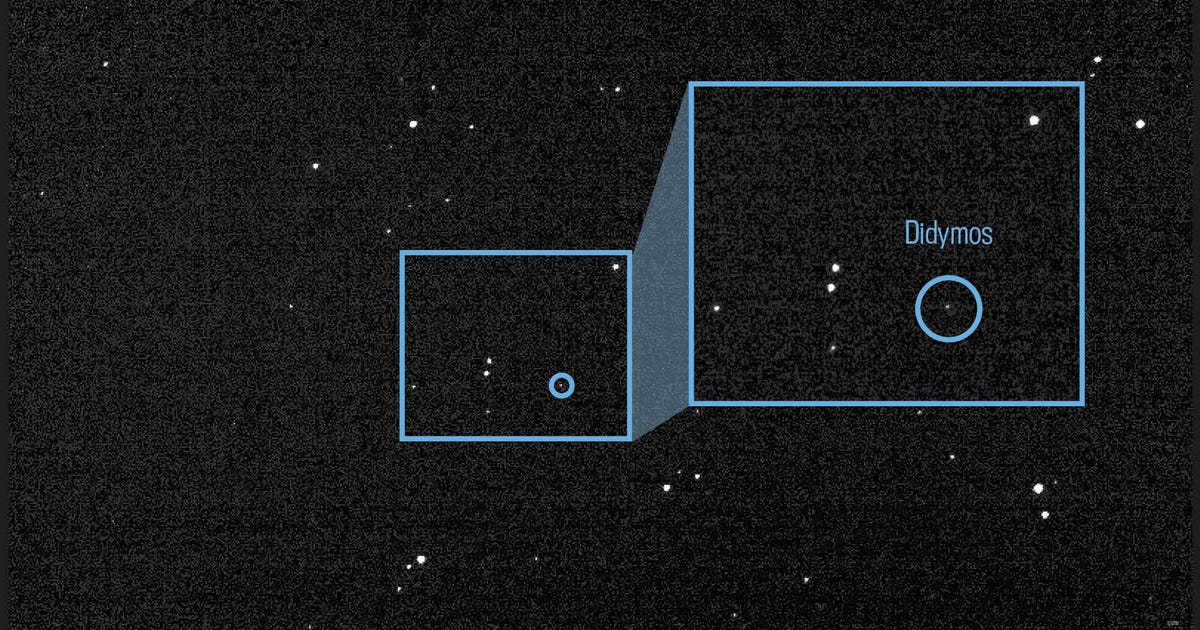
The moonlet Dimorphos is strolling through space with its larger asteroid companion Didymos, minding its own business, blissfully unaware of what’s coming. Meanwhile, NASA’s DART spacecraft is eying Dimorphos like a crouched cat preparing to pounce.
On Wednesday, NASA released DART’s first view of its target, a long-distance look at the Didymos system. DART stands for Double Asteroid Redirection Mission. The spacecraft will fling itself into Dimorphos to try to change its orbit around Didymos. All this effort is in the name of planetary defense and figuring out if hulk-smashing a dangerous asteroid could nudge it away from impacting Earth some day in the future.
The image shows the asteroid system as a tiny dot of light against the backdrop of space. The composite is made up of 243 images snapped by DART’s onboard Reconnaissance and Asteroid Camera for Optical navigation (DRACO) on July 27 from a distance of 20 million miles (32 million kilometers) away.
This first image might not look like much, but it shows the camera is on track to do its job. “The quality of the image is similar to what we could obtain from ground-based telescopes, but it is important to show that DRACO is working properly and can see its target to make any adjustments needed before we begin using the images to guide the spacecraft into the asteroid autonomously,” said DART mission systems engineer Elena Adams in a statement.
Didymos and Dimorphos don’t present a threat to our planet, but they offer a perfect test bed for an exercise that sounds like it came from a sci-fi disaster movie. DART is scheduled to collide with the moonlet on Sept. 26. Researchers will measure post-impact changes to the moonlet’s orbit around the asteroid.
It’s been smooth sailing for DART since it launched in November of last year. DART won’t survive the mission, but its sacrifice could be a game changer in the quest to protect Earth from space rocks.
